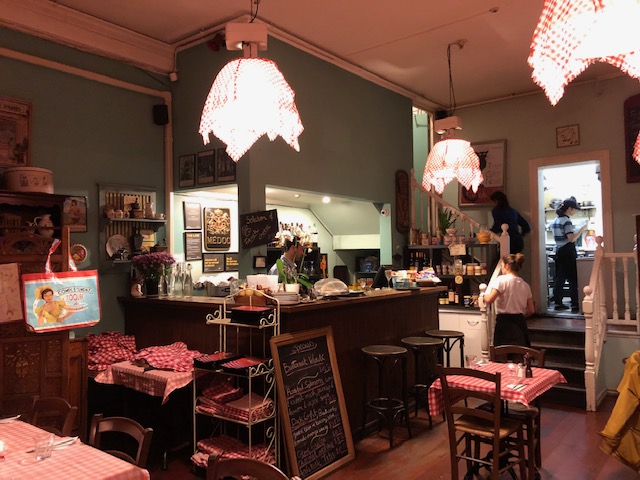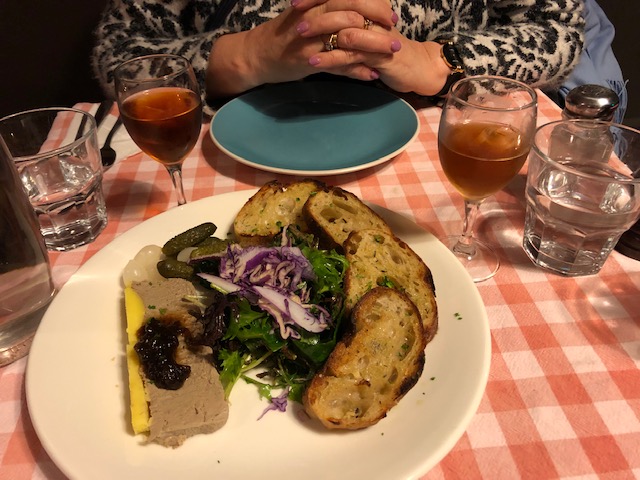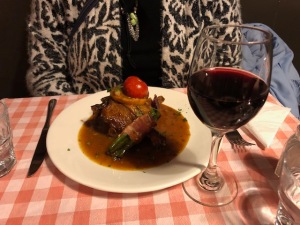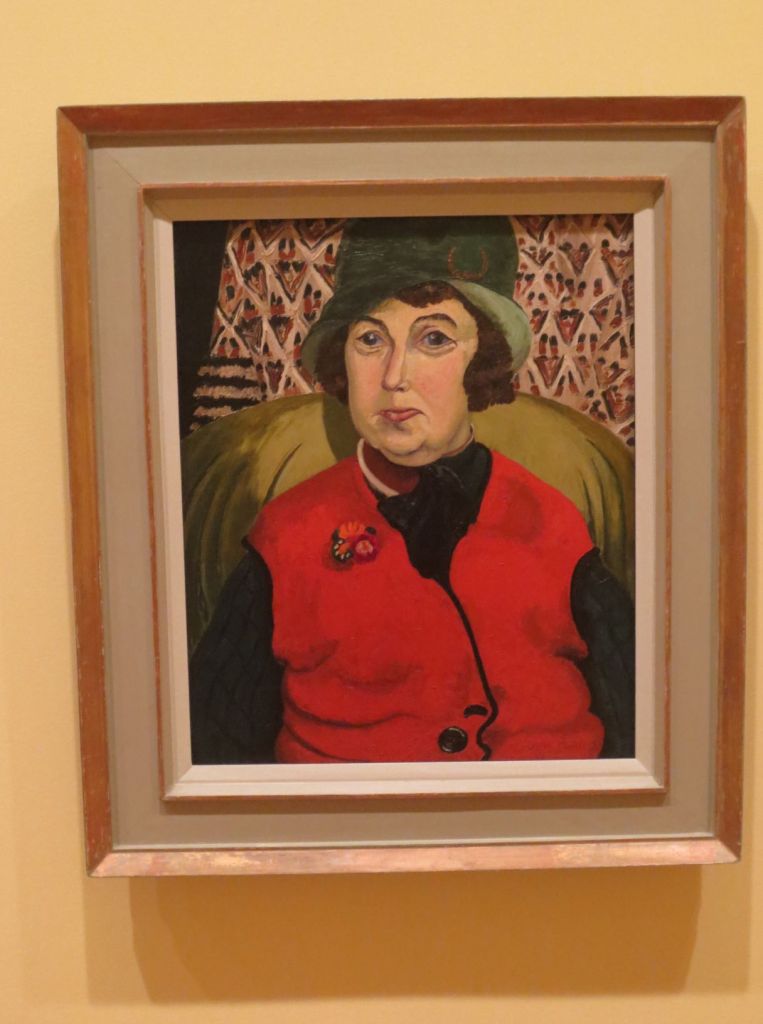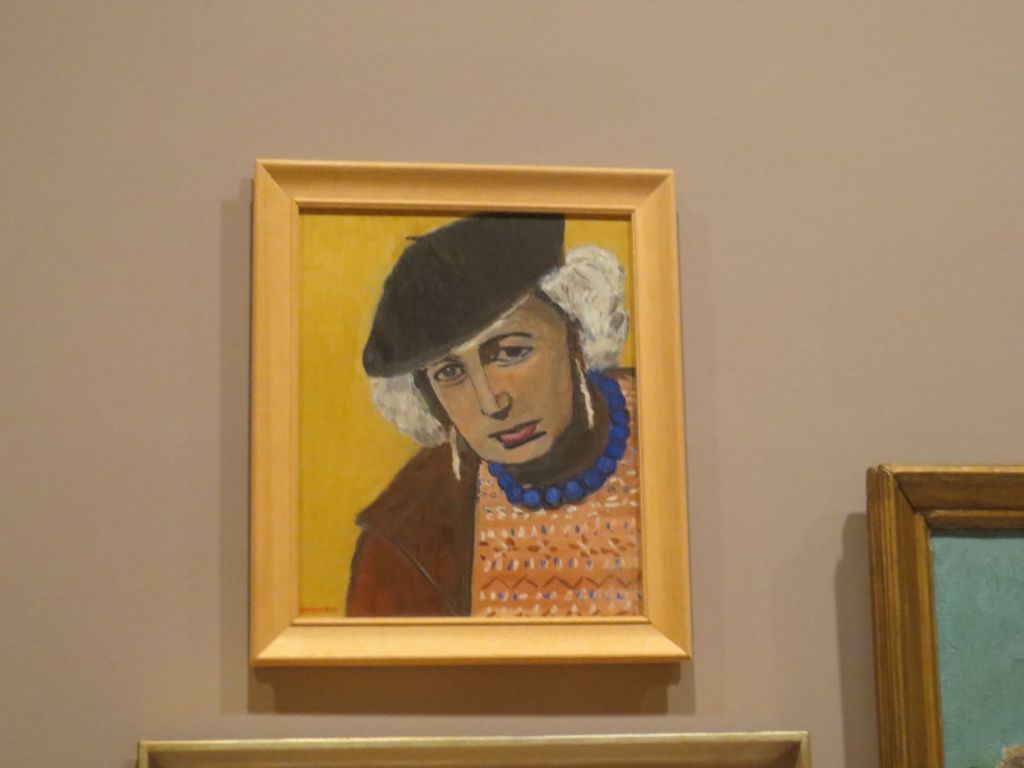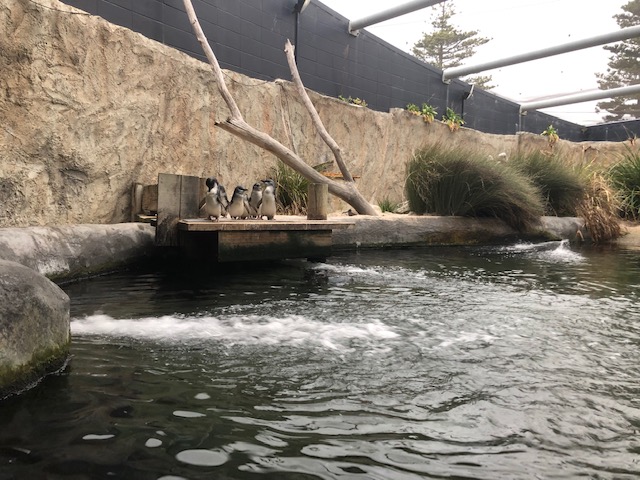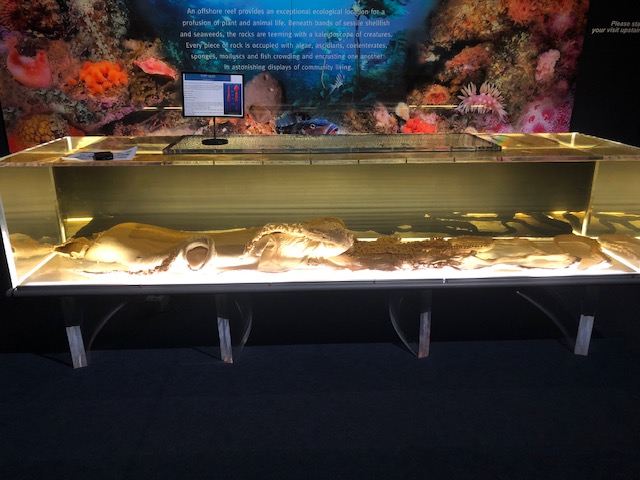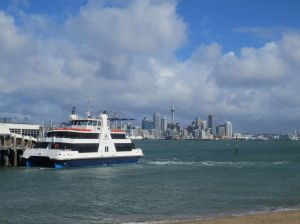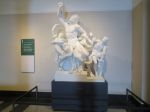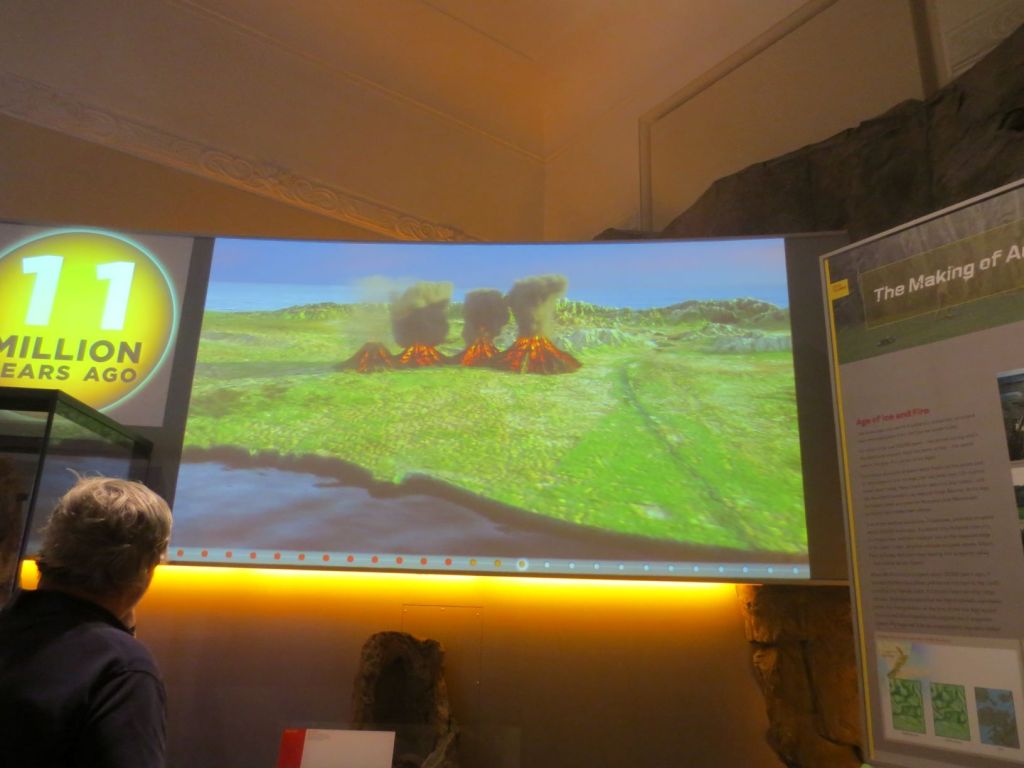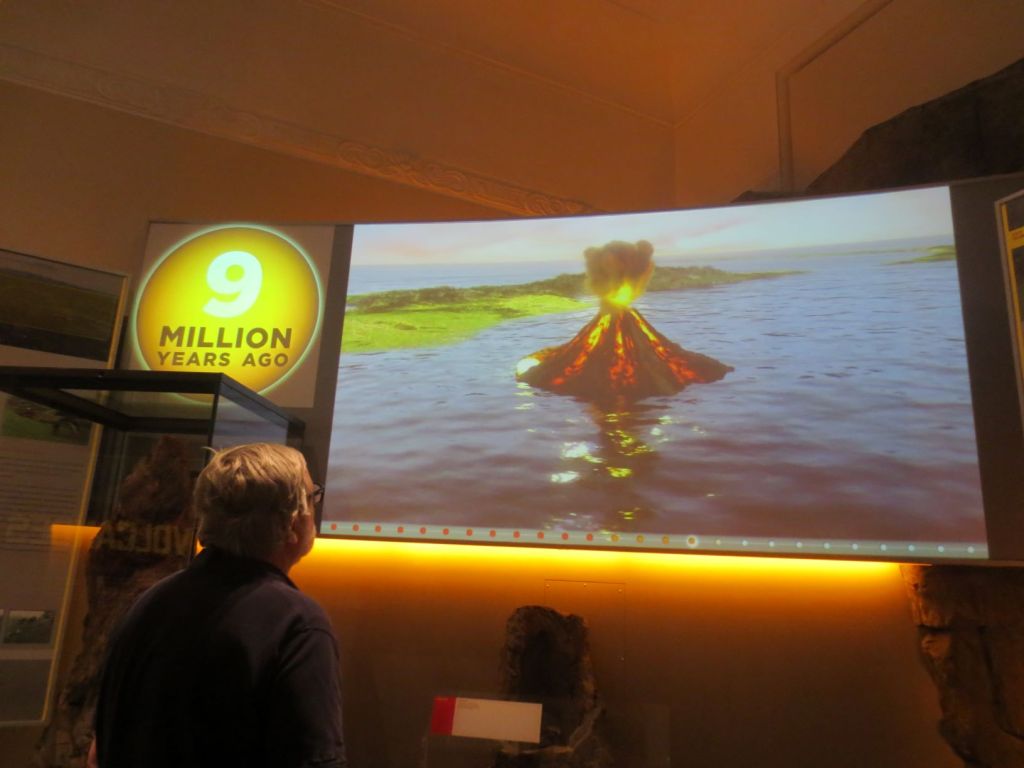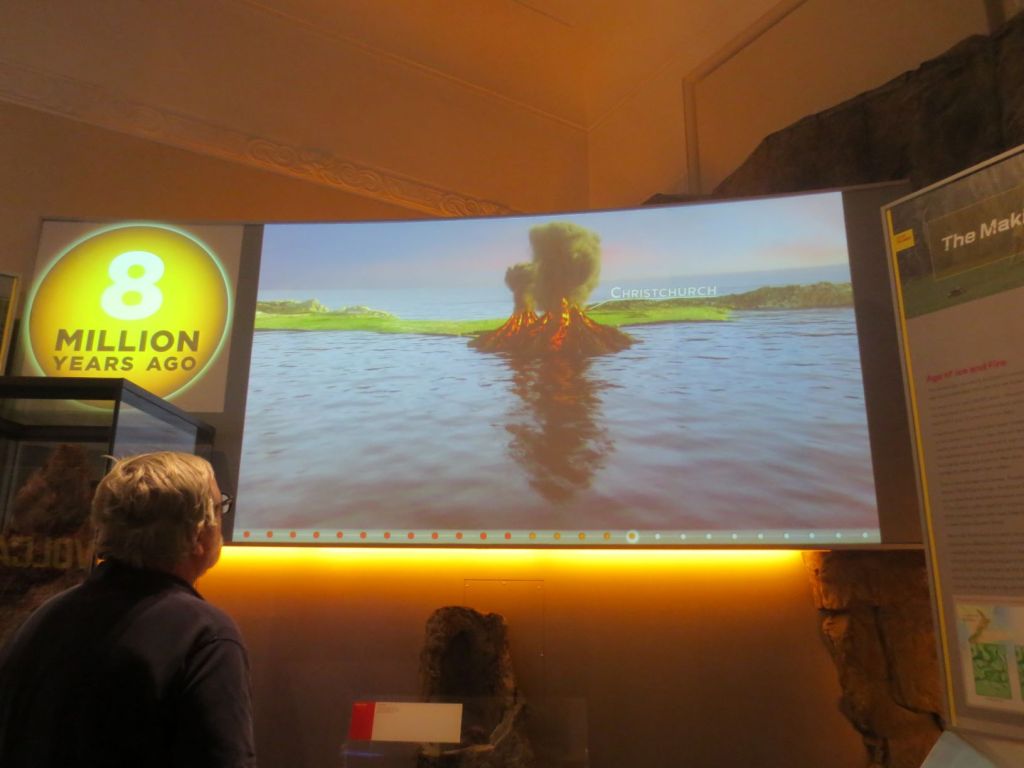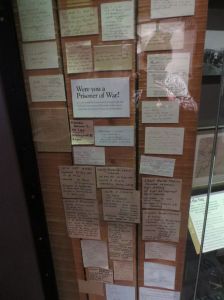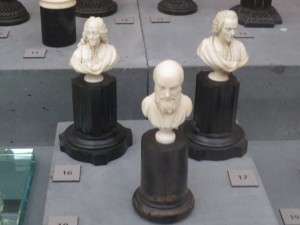After the disappointment of Katherine Mansfield’s house being closed for renovation, things improved.
 Yesterday we’d made a brief visit to the Te Papa Museum, which is a modern purpose-built museum opened in 1998. It is, alas, rather like the Melbourne Museum in concept, that is, there are vast areas of empty space to cross before you actually get anywhere. I have no idea why anyone thinks this is a good idea. These modern museums are obviously designed with children in mind and yet not for little legs which get tired. There are also lifts that don’t operate on all floors so you have to get out of the one cunningly placed next to the shop and then find the other one. You do a lot of walking without actually seeing anything…
Yesterday we’d made a brief visit to the Te Papa Museum, which is a modern purpose-built museum opened in 1998. It is, alas, rather like the Melbourne Museum in concept, that is, there are vast areas of empty space to cross before you actually get anywhere. I have no idea why anyone thinks this is a good idea. These modern museums are obviously designed with children in mind and yet not for little legs which get tired. There are also lifts that don’t operate on all floors so you have to get out of the one cunningly placed next to the shop and then find the other one. You do a lot of walking without actually seeing anything…
 Anyway, the first exhibit is on Level 2, and it’s about New Zealand’s experience of Gallipoli, so we dutifully visited that and then went upstairs to Level 3 where I was keen to see the Suffrage 125 Exhibition. To say that it was disappointing is an understatement. Kate Sheppard is a bit of a hero of mine, and she should be a hero for women around the world because she spearheaded the campaign for NZ women to be the first in the world to get the vote. But she barely got a mention and I know no more about her now than I did before. The exhibition is what they call a ‘pop-up’ exhibition, and this is a description of what was there from EventFindaCoNZ:
Anyway, the first exhibit is on Level 2, and it’s about New Zealand’s experience of Gallipoli, so we dutifully visited that and then went upstairs to Level 3 where I was keen to see the Suffrage 125 Exhibition. To say that it was disappointing is an understatement. Kate Sheppard is a bit of a hero of mine, and she should be a hero for women around the world because she spearheaded the campaign for NZ women to be the first in the world to get the vote. But she barely got a mention and I know no more about her now than I did before. The exhibition is what they call a ‘pop-up’ exhibition, and this is a description of what was there from EventFindaCoNZ:
To honour Suffrage 125, Te Papa curators have initiated a special collecting project, sourcing contemporary items related to women’s rights. Recent acquisitions include a breast pump from former Green MP and writer Holly Walker, the NopeSisters T-shirt which addresses sexual abuse, a menstrual cup from MyCup, a company committed to ending period poverty, a suit worn by Dame Jenny Shipley on her first day in office as New Zealand’s first-ever female Prime Minister, and Luamanuvao Dame Winnie Laban’s puletasi (formal Sāmoan outfit) which she wore to give her maiden speech as New Zealand’s first Pacific Island female Member of Parliament.
IMO If this is the best that New Zealand’s National Museum can do to honour a notable woman, then they ought to be ashamed of themselves.
So then we visited the Blood Earth Fire, Transformation of Aotearoa New Zealand exhibition. This was huge, taking up nearly the whole floor, and was basically about the impact of humans on the land.
Level 4, which we visited today, was much more to our taste. We started off with the Treaty Of Waitangi exhibits. When you first walk in you are confronted by a massive replica of the document—it reaches from floor to ceiling. Beside it on the wall is a large printed version of what was agreed… which was basically that the Maori ceded sovereignty but got to keep their land. (And as we all know, it didn’t work out that way at all.)
This slideshow requires JavaScript.
But as you progress round the exhibits (which include some of the original gifts that were exchanged as a sign of respect) you learn that actually there are multiple copies of the treaty, because it was copied and different copies of it were taken to sites (that you can see on the map of NZ) for all the chiefs to sign. (Some did, quite a lot didn’t). In the process the copies got shabby, and the documents weren’t properly preserved and now they are all damaged, much like the one you can see in the cabinet.
This exhibition was interesting to us because it exposes some of the mythology surrounding Australia’s failure to negotiate a treaty. It is said that in contrast to the disunity amongst Australia’s Indigenous People, the Maori chiefs were united and that made a treaty possible. Well, clearly, they weren’t all united. And then, obviously the treaty wasn’t respected anyway, not even enough to keep it safe from damage…
There is a huge exhibition of Maori history and culture on this floor, but unfortunately we weren’t allowed to photograph any of it, and I couldn’t buy postcards or an exhibition catalogue. However, I can show you a link to the contentious Maori wharenui which is a remarkable artefact. A wharenui is a meeting house, and this one was apparently removed from its original site without permission and the iwi (tribe) wants it back. This may be the reason why the signage is inadequate: if you take off your shoes you can go inside it, but there’s nothing to explain the significance of the architecture or the symbolic meanings of the carvings, not even in the digital video outside it. (I hate those things, I read much quicker than most people do, and it’s really annoying to have to stand and wait while they finish reading and turn the page).
There was also a stunning longboat, and models of the impressive boats that were used for the Maori voyages from Polynesia about 800 years ago—but we couldn’t photograph those either so you’ll just have to imagine them.
However, the museum has a modern version of a wharenui which belongs to everyone, they say, and I’ve found a Wikipedia picture of that:

On the same floor there is a Passports exhibition which is a bit like Melbourne’s Immigration Museum in concept. Unfortunately the lighting isn’t conducive to taking good photos, but here’s a little slideshow of items that caught my eye:
This slideshow requires JavaScript.
Tonight we’re going to Dockside Restaurant which is close by and therefore an ideal choice for tired feet, and tomorrow we are taking the train to Palmerston North. I gather that the main attraction there is a rugby museum, but I’m sure we’ll find something else to amuse ourselves, and I’m expecting the scenery en route to be gorgeous.
Photo credit:
Modern wharenui: by Allie_Caulfield from Germany – 2001-12-02 01-03 Neuseeland 152, CC BY 2.0, https://commons.wikimedia.org/w/index.php?curid=49439428
Museum Entrance: by rheins, CC BY 3.0, https://commons.wikimedia.org/w/index.php?curid=57306604
Kate Sheppard: By Book written by William Sidney Smith (1852-1929) but unclear whether he was photographer – From Outlines of the women’s franchise movement in New Zealand (1905) by William Sidney Smith (1852-1929). See File: Outlines of the women’s franchise movement in New Zealand.djvu, Public Domain, https://commons.wikimedia.org/w/index.php?curid=3329246
